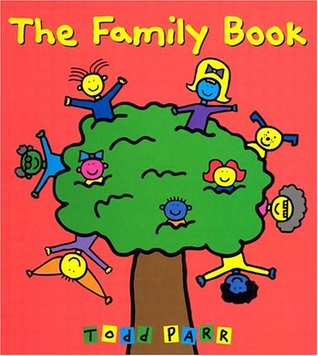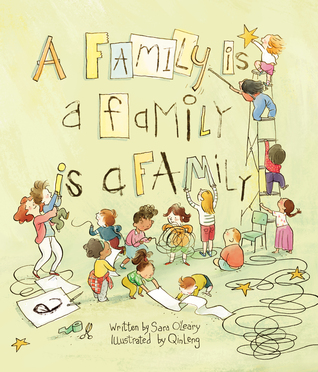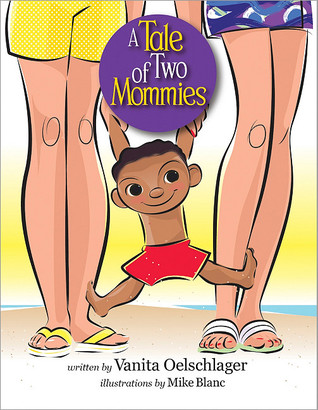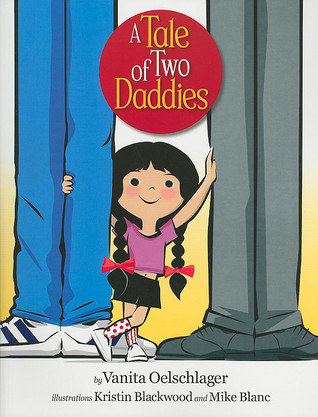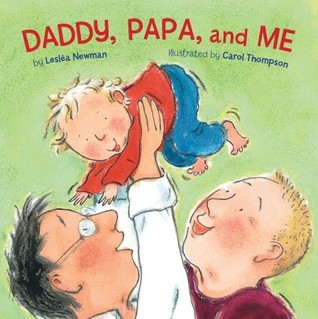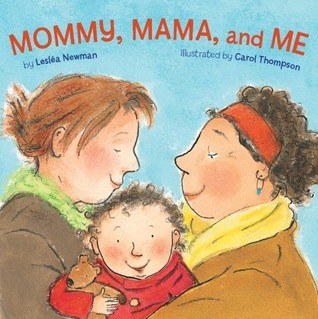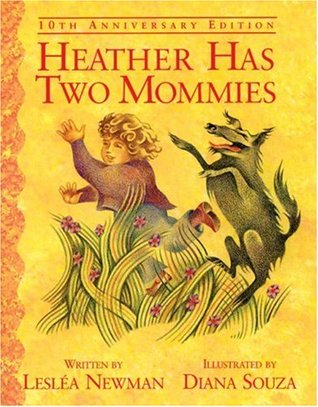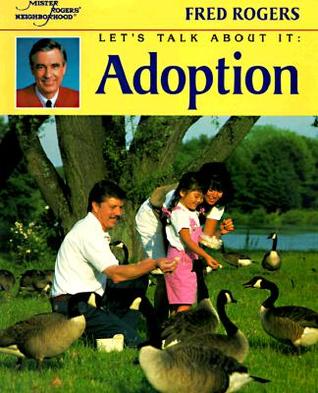I Have Two Moms
Having a family member or caregiver who is lesbian, gay, bisexual, transgender or queer (LGBTQ), may make you feel like you are different from other kids at school. What is important to remember is that every family is different. Some have two parents, some have only one, some have a mom and a dad and others have two moms or two dads. There are families with LGBTQ siblings and foster parents, or aunts, uncles, cousins and grandparents. There is no one right way to have a family. And while it may seem like you are different, being different is normal! [AMZ-109]
Youth
Having a family member or caregiver who openly identifies as lesbian, gay, bisexual, transgender or queer (LGBTQ) is becoming more common. It’s nothing to be ashamed or embarrassed about, because it reflects the different types of families that exist. However if you have an LGBTQ family member or caregiver, you may feel like you are different from other kids at school. Your friends’ families might look different, or you may not see your family represented in what you are learning in school. You may even hear hurtful things said about LGBTQ people. You are not alone. There are lots of kids who have LGBTQ family members, and most people generally know someone who is LGBTQ, even if they’re not in that person’s family.
Our biological and/or chosen family is usually a big part of who we are as people, so naturally we want to talk to our friends about them, and vice versa. It’s possible, however, that you may feel nervous talking about your LGBTQ family members, or feel like your friends will judge you because your family is different. Here are a few things to consider if you are going to tell a friend you have an LGBTQ family member or caregiver. Telling your friend that you want to talk with them about something that is important to you is the first step. From there, be open and honest about the information you want to share. You may also want to tell them beforehand that this is a personal matter and that you need them to keep this information private. It can also be a good idea to talk with a parent or trusted adult about how you plans to tell your friend. A parent or trusted adult may be able to offer helpful advice.
As with any news, there are a couple possible reactions you may experience from the other person. Your friend could react by saying it’s not a big deal, and they may be really supportive. If your friend reacts positively, that is awesome! Many people actually support LGBTQ equality, meaning that they believe everyone is created equal, and that LGBTQ people deserve all the same rights and privileges as any other person. Some people, unfortunately, may not be supportive and could say something you may not want to hear, like they don’t want to be your friend anymore or that they don’t support your family member.
If a friend tells you that they are not supportive, it may be because they are not familiar with different sexual orientations and gender identities, and your friend may need time to get comfortable with this idea. You may also have some friends that are confused or have lots of questions once you tell them. If you’d like, you could give them time to think about what you have shared. You may also want to talk with a trusted adult about how they reacted and how you are feeling. In the end, you can choose if this person is still someone you want to be friends with or not if they are not supportive. As well, remember that it is up to you to choose what information you do or don’t share. You do not have to answer any questions you’re not comfortable answering. You may want to find a website or other resource (like this AMAZE video) that talks about LGBTQ family members or caregivers. You can share it with your friend so they can learn more on their own.
What is important to remember is that every family is different. Some have two parents. Some have only one. Some have a mom and a dad, while others have two moms or two dads. There are families that have LGBTQ siblings, foster parents, aunts, uncles, cousins and grandparents. There is no one right way to have a family. And while it may seem like you are different, being different is normal!
FAQs
You do not ever have to reveal someone’s sexual orientation or trans identity if you don’t want to. If you believe, however, that this is information that people may easily find out, ask your relative for their thoughts or suggestions about sharing their sexual orientation or gender identity. Outing someone as LGBTQ is never a good idea if that person hasn’t given you permission to do so. That said, it may be difficult not to reveal if you have a parent, sibling or close guardian who is LGBTQ.
It is good when you have friends who trust you enough to share such important, yet personal information. When this happens, you may feel a mixture of feelings, including excitement or discomfort. No matter how you feel, it is important to be kind and respectful, showing that you value the trust your friend has given you. You can thank your friend for being willing to share something so personal, and affirm their relative by sharing your support for LGBTQ people. If you have questions, you may ask them, keeping in mind, though, that your friend may not have the answers, or want to answer your questions, which is their right.
Additional Resources
Parents
As your child proceeds in their social development, it is likely they will meet and make friends who have LGBTQ relatives, including but not limited to parents, siblings and other caretakers. This may be a very different experience from what you had growing up. While this may be a new experience for some parents, it is perfectly normal and reflects the various types of families that exist in the world. Children who have LGBTQ relatives may feel like they are different from other kids at school. Their families might look different from other families, and as a result, others at school may treat them differently. It’s important to note that there are many children who have LGBTQ family members. In addition, most people know someone (who may or may not be a family member) who is LGBTQ.
It’s normal that your child may want to talk to their friends about you or other relatives. If you are an LGBTQ parent or caregiver, it may be helpful to have a conversation with your child early on to establish your comfort level with how much they share with their peers or teachers. Doing so in advance could prevent unintentional oversharing later.
A child talking with friends about their LGBTQ relatives may experience a variety of different responses, including support and rejection. In the end, it is the young person’s right to choose if they want to be friends with someone who is not supportive. It is also up to them to choose what information they will and will not share. Remind your young person that they do not have to answer any question they are not comfortable answering. You may instead choose to find a website or other resource (like this AMAZE video) that your child can share with others about LGBTQ family members or caregivers.
What is important to remember is that every family is different. Some have two parents, and some have only one. Some have a mom and a dad, while others have two moms or two dads. There are families with LGBTQ siblings, foster parents, aunts, uncles, cousins and grandparents. There is no one right way to have a family; indeed, difference is the norm!
CONVERSATION STARTERS
Being a child’s earliest educator means parents can normalize not only the reality of LGBTQ family members, but also the standards for how LGBTQ people should be treated and/or interacted with. When parents and caregivers are open and honest about gender and sexual diversity, it reduces discomfort and embarrassment (if there is any) that may come from having an LGBTQ family member or having a friend with an LGBTQ family member. Engaging in early conversations about family diversity—including families where there may be two same-gender parents, for example—shows that you respect and value diversity in your community, and want your child to do so as well.
Below are some ways to start conversations about same-gender-loving people and families with other LGBTQ members:
In recent years, depictions of LGBTQ people in families have increased, both on television and in social media. These shows can be excellent ways to both normalize the presence of LGBTQ people in families and start conversations with your young people about LGBTQ people and LGBTQ issues at large. While watching, you can ask questions like the following: How might this family be different from a family where everyone is heterosexual, and how might it be the same? What are some of the challenges you think this family might face and why? How could you show your support for a friend whose family is like this one?
It is quite possible that you have strong opinions about LGBTQ rights, or even subtle biases about LGBTQ people, whether you support them or not. Do not be afraid to share your personal values with your children, yet be careful not to force your children to take on your values if they do not agree with them. Not only is this not an effective strategy to change your child’s values, it may adversely affect the relationship you have with your child, and prevent them from seeking you out in the event they have questions or thoughts.
In recent years, depictions of LGBTQ people in families have increased, both on television and in social media. These shows can be excellent ways to both normalize the presence of LGBTQ people in families and start conversations with your young people about LGBTQ people and LGBTQ issues at large. While watching, you can ask questions like the following: How might this family be different from a family where everyone is heterosexual, and how might it be the same? What are some of the challenges you think this family might face and why? How could you show your support for a friend whose family is like this one?
Educators
It is likely you will have students who have LGBTQ relatives, including but not limited to parents, siblings and other caretakers. This may be a very different experience from what you or your students’ parents experienced growing up. While this may be a new experience for some educators and parents, it is perfectly normal and reflects the various types of families that exist in the world. Children who have LGBTQ relatives may feel like they are different from other kids at school. Their families might look different from other families, and as a result, others at school may treat them differently. It’s important to note that there are lots of children who have LGBTQ family members. In addition, most people generally know someone who is LGBTQ, even if they’re not open about their sexual orientation (also known as being out of the closet or out).
It is quite possible that students are already aware of which children have LGBTQ relatives and which do not. A child talking with friends about their LGBTQ relatives may experience a variety of responses, including support and rejection. In the end, it is the young person’s right to choose if they want to be friends with someone who is not supportive. It is also up to them to choose what information they will and will not share. As the teacher, it is important to establish with all students that they do not have to answer any question they are not comfortable answering. You may wish to find a website or other resource (like this AMAZE video) that talks about LGBTQ family members or caregivers so that children can research on their own without relying on your students with LGBTQ family members to teach them.
Having students in your classroom with LBGTQ family members is a great time to remind students that every family is different. Some have two parents, and some have only one. Some have a mom and a dad, while others have two moms or two dads. There are families with LGBTQ siblings, foster parents, aunts, uncles, cousins and grandparents. There is no one right way to have a family; indeed, difference is the norm!
Discussion Questions
- According to the video, what are some of the ways LGBTQ people might become parents to children?
- Why might an LGBTQ couple want to become parents? How are these reasons similar or different the reasons heterosexual couples might want to become parents?
- If a friend had questions about how LGBTQ couples become parents, what information would you share with them?
National Sex Education Standards
Identify different kinds of families (e.g., nuclear, single parent, blended, intergenerational, cohabitating, adoptive, foster, same-gender, interracial)
